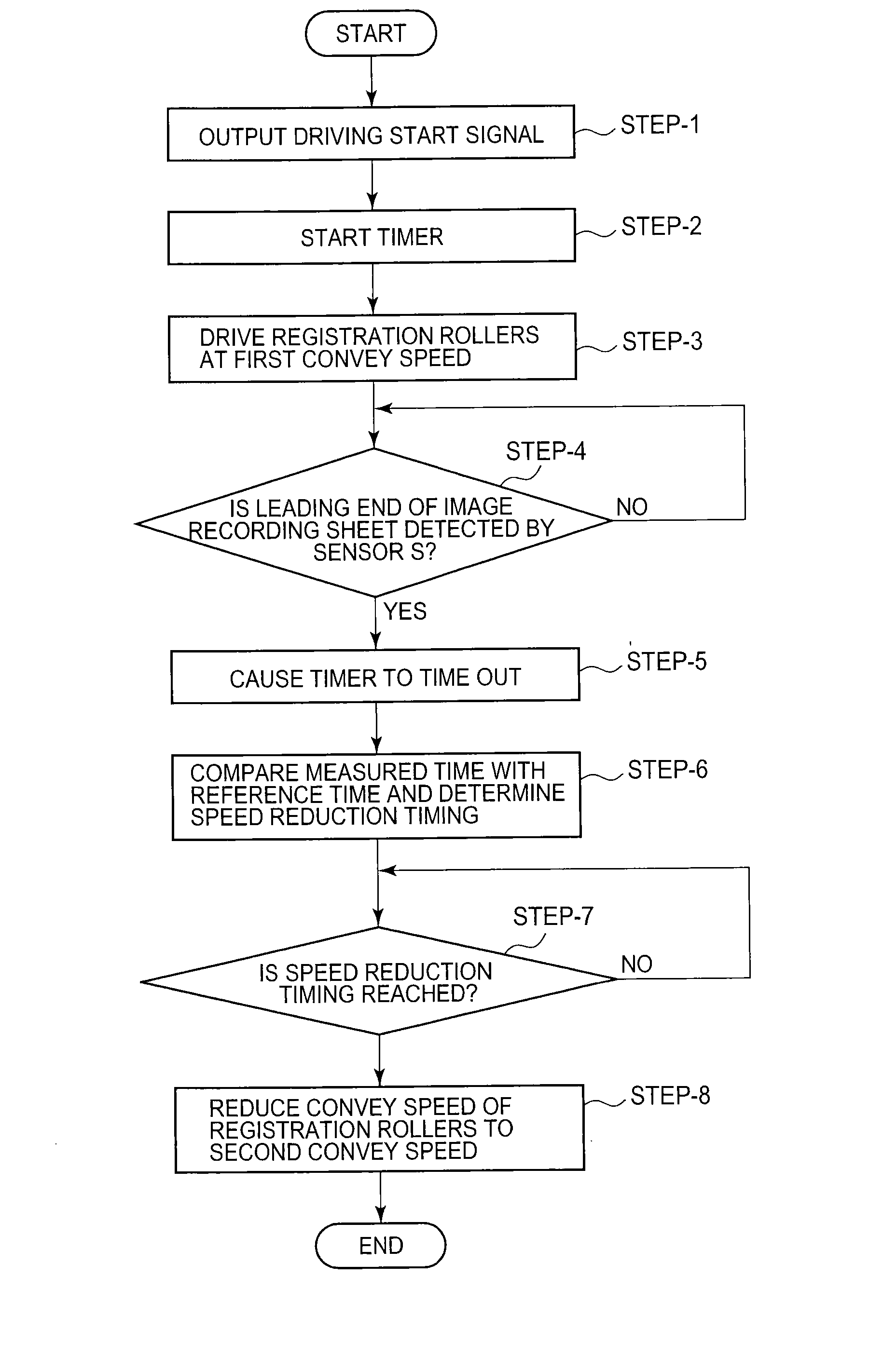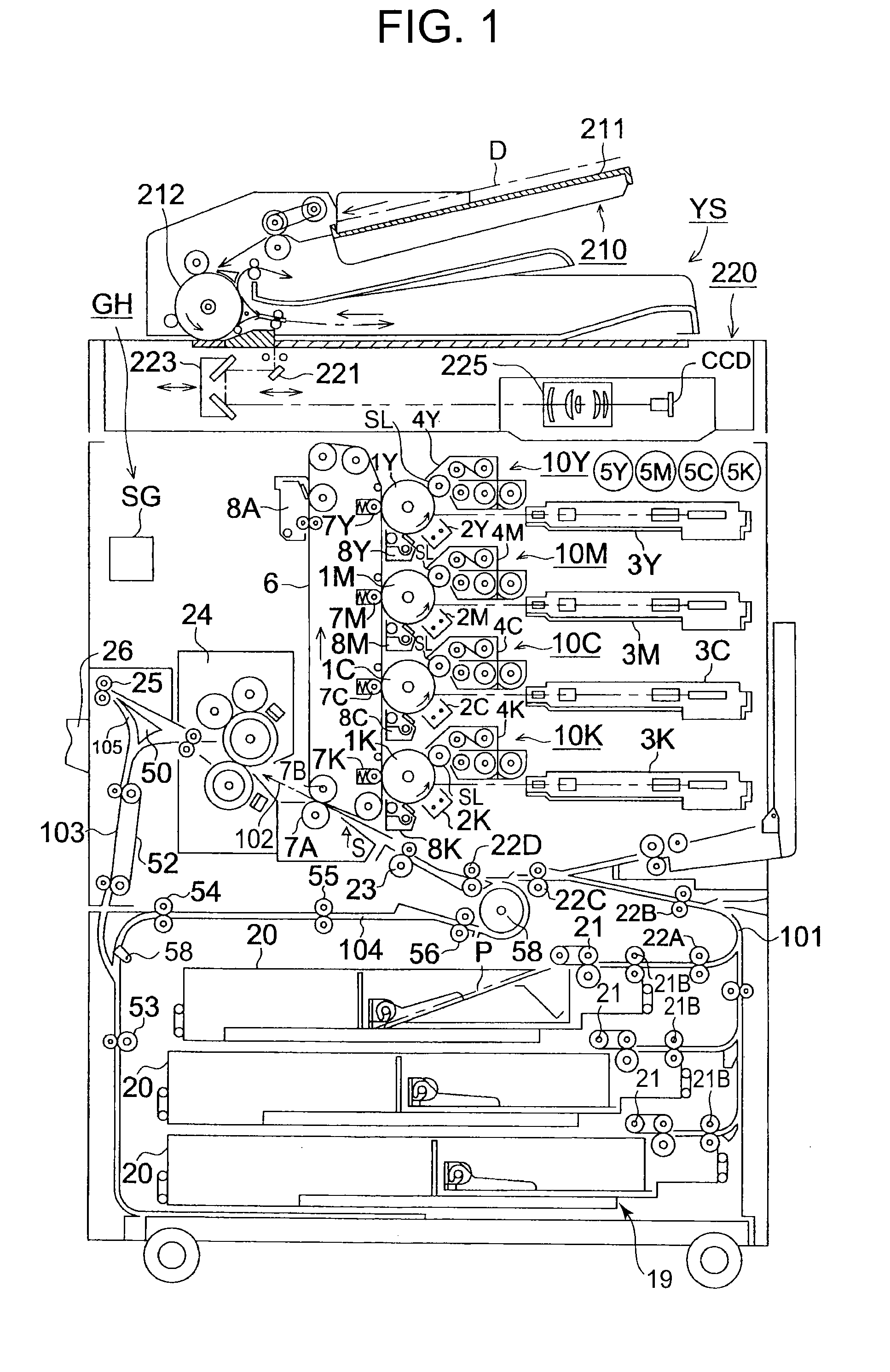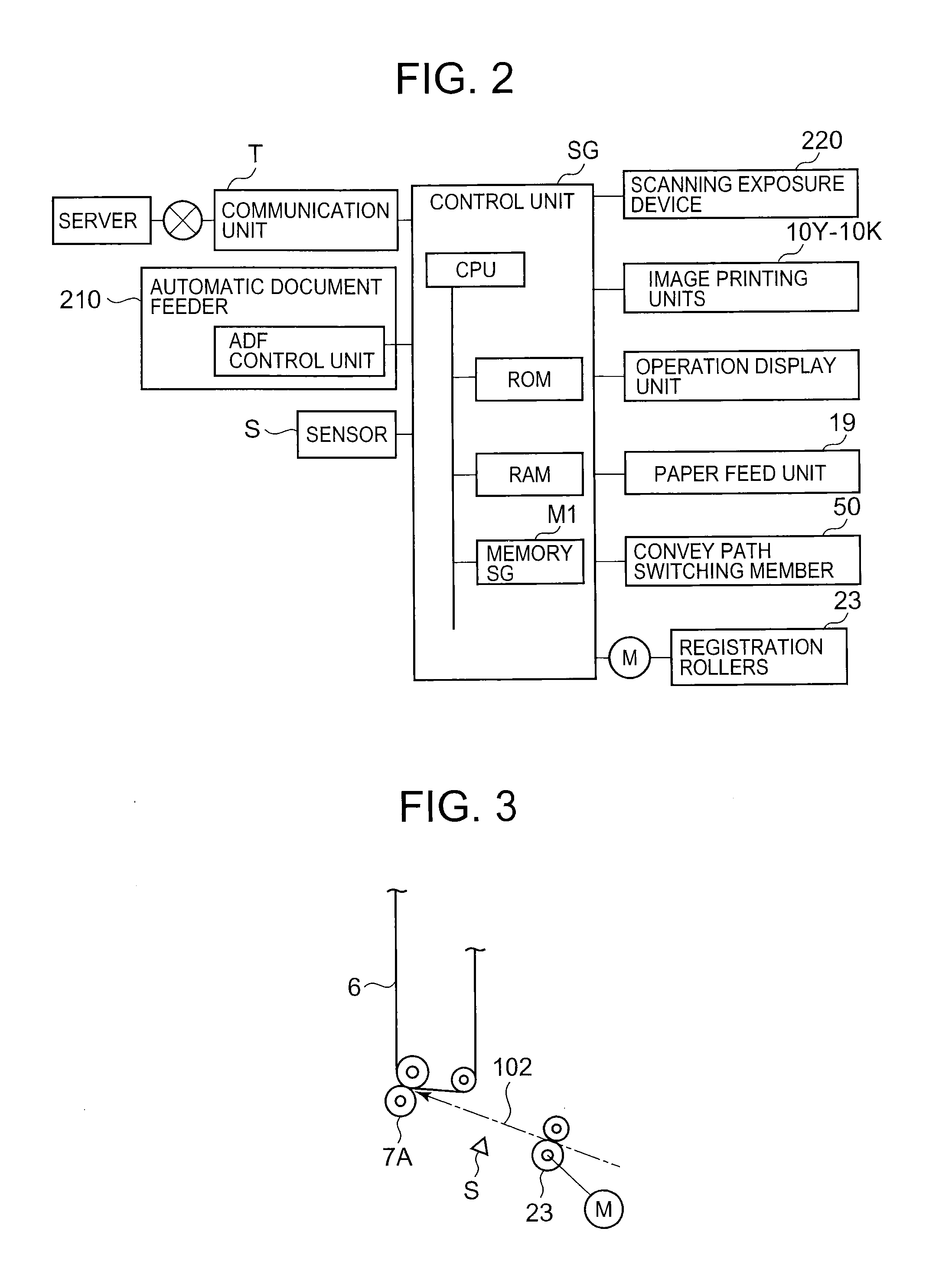Image printing apparatus
- Summary
- Abstract
- Description
- Claims
- Application Information
AI Technical Summary
Benefits of technology
Problems solved by technology
Method used
Image
Examples
experimental example
[0118] The control on the registration roller unit 23 in the embodiment of the present invention was performed to print images on 3,000 image recording sheets, and the distances from the leading ends of the respective image recording sheets to the positions where toner images were formed were measured. If the difference between the measured maximum and minimum distances is regarded as a positional shift amount, the maximum positional shift amount is 0.2 mm. The level of this positional shift satisfies the condition of accuracy required for a quick printer.
PUM
 Login to View More
Login to View More Abstract
Description
Claims
Application Information
 Login to View More
Login to View More - R&D
- Intellectual Property
- Life Sciences
- Materials
- Tech Scout
- Unparalleled Data Quality
- Higher Quality Content
- 60% Fewer Hallucinations
Browse by: Latest US Patents, China's latest patents, Technical Efficacy Thesaurus, Application Domain, Technology Topic, Popular Technical Reports.
© 2025 PatSnap. All rights reserved.Legal|Privacy policy|Modern Slavery Act Transparency Statement|Sitemap|About US| Contact US: help@patsnap.com



